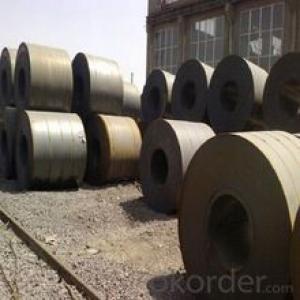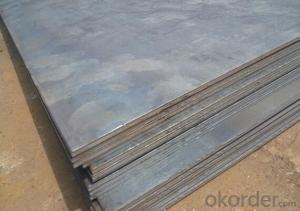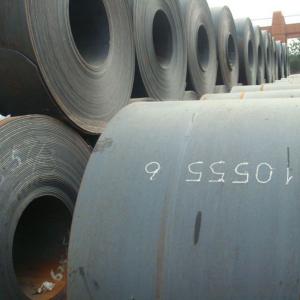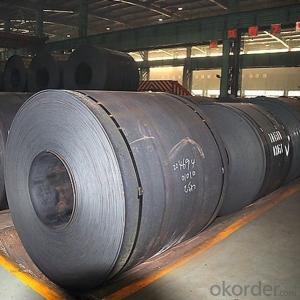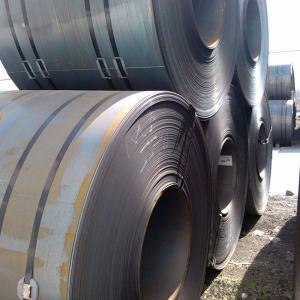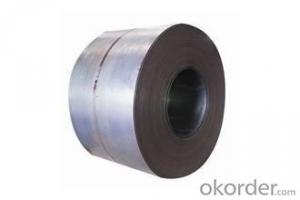SS400 Hot rolled steel coils
- Loading Port:
- China Main Port
- Payment Terms:
- TT or LC
- Min Order Qty:
- -
- Supply Capability:
- 50000 m.t./month
OKorder Service Pledge
OKorder Financial Service
You Might Also Like
Production Discription:
OKorder is offering high quality SS400 Hot Rolled Steel Coil at great prices with worldwide shipping. Our supplier is a world-class manufacturer of steel and steel coil and our products are utilized the world over, with OKorder annually supplying a full range of products to European, North American and Asian markets. We provide quotations within 24 hours of receiving an inquiry and guarantee a competitive price.
Product Applications:
SS400 Hot Rolled Steel Coil is used in a wide range of applications from structural, pressure vessel quality, pipe & tube, transportation (ship, barge, rail and automotive) and energy applications.
Product Advantages:
SS400 Hot Rolled Steel Coil resists corrosion and stains, is very low maintenance and its familiar luster make it an ideal material for many applications.
Main Product Features:
Resists corrosion
Low maintenance
Most dimensions available
Product Specifications:
Standard: AISI, ASTM, BS, DIN, GB, JIS
Grade: Q195, Q235, SS400, Q345, SPHC
Thickness: 1.5mm – 600mm
Width: 1250mm, 1500mm, 1800mm, 2000mm
Origin: China (PRC)
Model Number: 1.2 – 12.5
Type: Steel Coil
Technique: Hot Rolled
Surface Treatment: Other
Application: Boiler Plate
Special Use: High-strength Steel Plate
Delivery: 30 Days
FAQ:
Q1: Why buy Materials & Equipment from OKorder.com?
A1: All products offered by OKorder.com are carefully selected from China's most reliable manufacturing enterprises. Through its ISO certifications, OKorder.com adheres to the highest standards and a commitment to supply chain safety and customer satisfaction.
Q2: How do we guarantee the quality of our products?
A2: We have established an advanced quality management system which conducts strict quality tests at every step, from raw materials to the final product. At the same time, we provide extensive follow-up service assurances as required.
- Q: what do you think about it? Is it a good steel for the money? the knife that i have with that steel is the kershaw chill. good knife for the price
- 8Cr13MoV is a decent blade steel...not a great steel, but about as good as you will generally find without paying much higher prices. It's used by a number of well known knife makers... It's basically equivalent to AUS-8 and will work and hold an edge reasonably well for most basic cutting chores. *************************************** From Wikipedia, the free encyclopedia: 8Cr13MoV, a Chinese stainless steel tempered at the Rc56 to Rc58 range and used in the Tenacious, Persistence, Ambitious, Resilience, Grasshopper, Kiwi3 and Byrd lines of knives. Often compared to AUS-8, but with slightly more Carbon.
- Q: How are steel coils inspected for mechanical properties?
- Steel coils are inspected for mechanical properties through a combination of destructive and non-destructive testing methods. Destructive methods involve conducting tensile, hardness, and impact tests on samples taken from the coils. Non-destructive methods, such as ultrasonic or magnetic particle testing, are also employed to detect surface and internal defects without damaging the coils. These inspections ensure that the steel coils meet the required mechanical specifications for their intended applications.
- Q: Can steel coils be coated with anti-static materials?
- Yes, steel coils can be coated with anti-static materials. These materials are specifically designed to reduce or eliminate static electricity buildup on the surface of the steel coils, which can be beneficial in various industrial applications where static discharge can cause damage or safety hazards.
- Q: What is the best butcher's steel around $20? I'm looking for a good tool to straight out some kitchen knives. thanks
- Not really. Unless your knives are remarkably rusty and chipped, cleaning the knife after the steel will do little. It is possible that you are consuming an immeasurable amount of metal, but then again you're probably consuming a little from everything the food touches. Thats just the way it is and it is nothing to be worried about.
- Q: I want to save water $$, so I want to use frozen steel to cool my coke. possible or no?
- can't freeze it but ya can make it very cold
- Q: What are the main factors to consider when selecting a steel coil supplier?
- When selecting a steel coil supplier, the main factors to consider are the supplier's reputation and reliability in delivering high-quality products, their ability to meet your specific requirements such as coil size, grade, and coating, their competitive pricing and payment terms, their capacity and ability to handle your required quantity, and their customer service and responsiveness to your needs.
- Q: and is that different from the components of steel
- Making steel is very energy intensive. Mining the raw ore requires a lot of machinery that uses fuel or electricity . Transporting the ore requires a lot of fuel. Refining not only uses a lot of electricity but coal is added to change the iron ore into steel.
- Q: How are steel coils used in the manufacturing of fuel systems?
- Steel coils are commonly used in the manufacturing of fuel systems to create various components such as fuel tanks, pipes, and fittings. These coils are often shaped, cut, and welded to form the desired fuel system parts. The high strength and durability of steel make it an ideal material for fuel systems, ensuring the safe and efficient transportation of fuel.
- Q: Where are the coils and the steel plates used? Where did the steel plate come from?
- The use of steel coils, refrigerators, washing machines, household appliances, and other industries, parcels are winding.Steel plates can also be found everywhere: airplanes, guns, trains, ships, space shuttles, spaceships, automobiles, etc..Steel plate through mining - sintering - iron smelting - smelting - forming.
- Q: Steel, Sturm, and Kitiara are in a series called the Dragonlance Chronicles.
- Steel Brightblade
Send your message to us
SS400 Hot rolled steel coils
- Loading Port:
- China Main Port
- Payment Terms:
- TT or LC
- Min Order Qty:
- -
- Supply Capability:
- 50000 m.t./month
OKorder Service Pledge
OKorder Financial Service
Similar products
Hot products
Hot Searches
Related keywords
